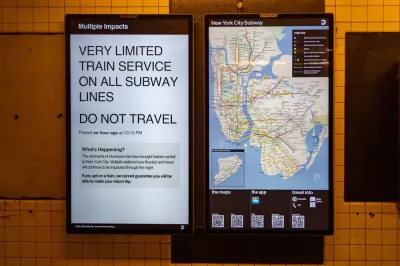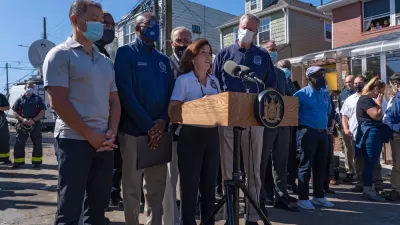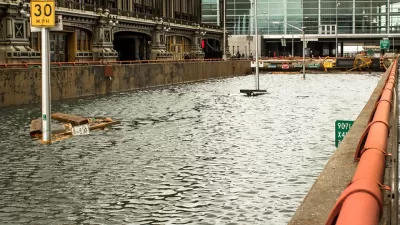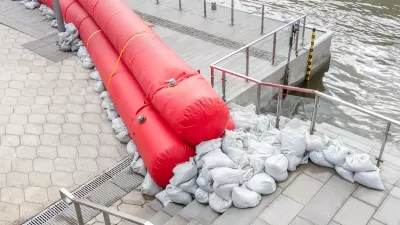Hurricane Ida passed through New Orleans, knocking out power causing extensive damage along the Gulf Coast. Then it moved to the Northeast, killing dozens of people with flooding caused by heavy rains.

Emily Crane, Amanda Woods, and Georgett Roberts report that at least 25 people were killed in New York and New Jersey on Wednesday night and Thursday morning as the remnants of Hurricane Ida passed through the region, dropping heavy rains and leaving massive floods as it passed.
Basement apartments were one of the least safe places to be during the extreme weather. "Eleven people died in [New York City] after becoming trapped in flooded basement apartments," according to the article, including a 2-year-old boy and his parents in Queens.
"The rising death toll came as a state of emergency was in effect Thursday after the historic downpour knocked out power and flooded streets, homes and subways — prompting the first-ever flash flood warning for the Big Apple."
"The National Weather Service had also issued a tornado warning for parts of the Bronx late Wednesday," according to the article. The response to a flash flood warning (head for high ground) obviously conflicts with the response to a tornado warning (head to your basement).
As of Thursday morning, rescuers were still searching for more stranded people, and the death toll is expected to rise. The deadliest storm in New York State history, Superstorm Sandy, killed 53. The most recent death toll update on the The New York Times website as of this writing was saying that 28 people were killed from flooding caused by Ida in New York, New Jersey, and Pennsylvania.
Back in Louisiana and Alabama, where Ida first made landfall in the United States, the most recent death toll as of this writing was six, with nearly a million residents without power on Wednesday morning.
FULL STORY: At least 25 people killed overnight in NYC, NJ during historic flooding

Planetizen Federal Action Tracker
A weekly monitor of how Trump’s orders and actions are impacting planners and planning in America.

Chicago’s Ghost Rails
Just beneath the surface of the modern city lie the remnants of its expansive early 20th-century streetcar system.

San Antonio and Austin are Fusing Into one Massive Megaregion
The region spanning the two central Texas cities is growing fast, posing challenges for local infrastructure and water supplies.

Since Zion's Shuttles Went Electric “The Smog is Gone”
Visitors to Zion National Park can enjoy the canyon via the nation’s first fully electric park shuttle system.

Trump Distributing DOT Safety Funds at 1/10 Rate of Biden
Funds for Safe Streets and other transportation safety and equity programs are being held up by administrative reviews and conflicts with the Trump administration’s priorities.

German Cities Subsidize Taxis for Women Amid Wave of Violence
Free or low-cost taxi rides can help women navigate cities more safely, but critics say the programs don't address the root causes of violence against women.
Urban Design for Planners 1: Software Tools
This six-course series explores essential urban design concepts using open source software and equips planners with the tools they need to participate fully in the urban design process.
Planning for Universal Design
Learn the tools for implementing Universal Design in planning regulations.
planning NEXT
Appalachian Highlands Housing Partners
Mpact (founded as Rail~Volution)
City of Camden Redevelopment Agency
City of Astoria
City of Portland
City of Laramie





























